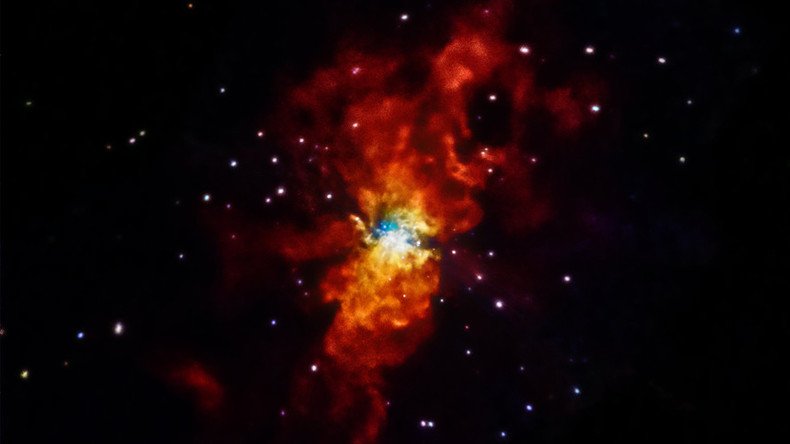‘Zombie’ supernova rises from dead in shock discovery

When a star reaches the end of its life, it explodes in one final cataclysmic blast that can shine with the light of 100 million suns for months, before fading into the blackness of space. This was thought to be end awaiting all stars - until now.
An international team of astronomers studying supernova explosions has discovered a “zombie star” that has repeatedly gone through this death cycle over the last half century. The star in question, iPTF14hls, was discovered in 2014 and it looked like any ordinary - if you can call an exploding star ordinary - supernova.
However, upon closer inspection, the team noticed that instead of disappearing completely into darkness, once faded it began to glow brighter again. No one has ever witnessed anything like this before.
Einstein was right: Spectacular neutron star crash the first ‘talking movie’ recorded in cosmos (VIDEOS https://t.co/Skm4SW1ZXwpic.twitter.com/dREAd52Nd2
— RT (@RT_com) October 17, 2017
“This supernova breaks everything we thought we knew about how they work,” study lead author Iair Arcavi said. “It’s the biggest puzzle I’ve encountered in almost a decade of studying stellar explosions.”
Though the star was discovered three years ago, once astronomers realized its bizarre behaviour, they consulted archival data and discovered that an explosion happened in the same spot - about half-a-billion light years away from Earth - 50 years ago. Somehow this star survived that explosion, only to blow again in 2014. In the study, published Thursday in the journal Nature, the team estimated that iPTF14hls was at least 50 times bigger than our sun, and most likely much bigger.
It was the earlier explosions that provided scientists with a clue to the star’s seemingly multi-death-throe behaviour. They think it could be the first example of a pulsational pair-instability supernova, an as-yet theoretical phenomenon in which stars with masses of at least 100 million suns can explode multiple times, ejecting vast amounts of material into space before finally succumbing to death and forming a black hole.
READ MORE: Spectacular neutron star crash stretched space time by fraction of an inch (VIDEOS)
However this theory does not fully explain iPTF14hls’ bizarre behavior, because the energy released by this supernova is more than the theory predicts, “These explosions were only expected to be seen in the early universe and should be extinct today,” study co-author Andy Howell said. “This is like finding a dinosaur still alive today. If you found one, you would question whether it truly was a dinosaur,” he added.











